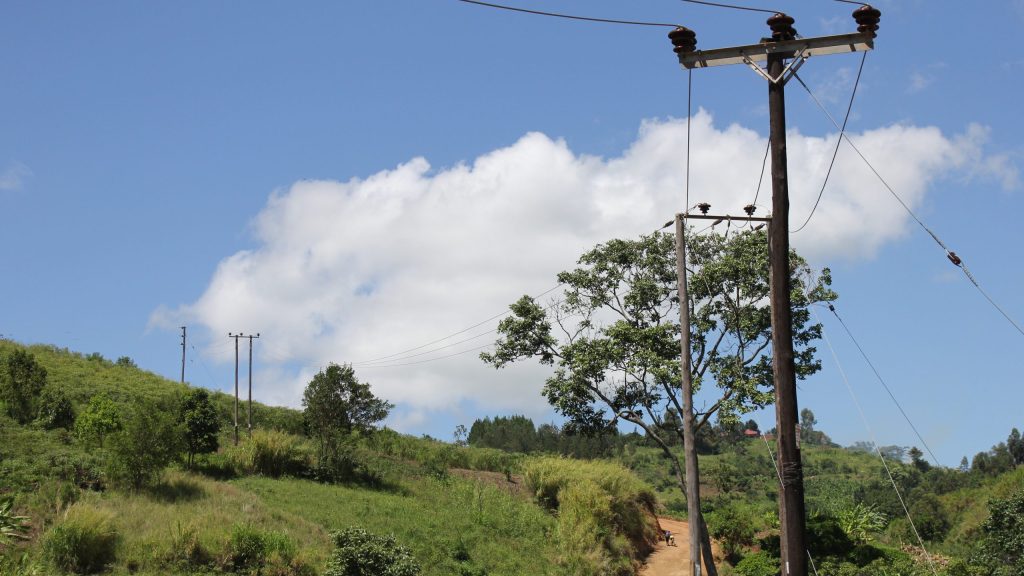Is electrification enough without more infrastructure?

A Research Brief based on EfD Discussion Paper 22-06, Unmasking the Mystery of the Varying Benefits from Electrification (2022), by Nicholas Kilimani and Edward Bbaale (Makerere University, Kampala, Uganda) and Marc A. Jeuland (Duke University, Durham, North Carolina, USA)
Key findings:
While electricity is a key to economic development, nearly 600 million people in sub-Saharan Africa live without electricity.
This study analyses the socioeconomic benefits of electrification in Uganda.
The findings show that grid connectivity increases the number of work hours, female employment, household expenditure (meaning that the household is able to buy more of the goods that it needs), and key educational outcomes.
Furthermore, the benefits from grid connectivity increase with time.
However, achieving the benefits from electrification requires complementary infrastructure to be in place, such as markets, roads, and other supportive services.
Why invest in grid electricity expansion?
Electrification promises improvements in access to information about health and family planning, household productivity, children’s study opportunities, development of small and medium business enterprises, and general household welfare. Uganda is no exception, because the bulk of its population currently relies on traditional, highly polluting sources of fuel – such as wood, charcoal, and animal and plant waste – for lighting, heating, and cooking. The related time and health burdens are especially heavy for women and children, who have to spend time collecting fuel, and also suffer from breathing in the particulate matter that results from burning these fuels. Because energy poverty stifles socioeconomic development, electrification, supported by clean energy solutions, is a key development priority for policymakers and development partners in many developing countries.
In 2018, the Government of Uganda, with funding from the African Development Bank and other partners, launched the ‘last-mile’ connectivity component under the Uganda Rural Electricity Access Project. The objective was to provide reliable and affordable electricity to rural households, public institutions, and small and medium-sized business enterprises. The scheme was expected to significantly contribute to meeting the country’s National Development Plan goal of “increasing electricity access to 60 percent of the population.” In seeking to address the global UN Sustainable Development Goals No.7 (“Ensuring access to affordable, reliable, sustainable and modern energy for all”) and No. 5 (“Achieving gender equality and empower all women and girls”), the government of Uganda has undertaken several energy sector reforms with a view to satisfying the increasing energy needs of the economy and the general population.
The overall national electricity access rate has increased to 57 percent (including both grid and off-grid sources such as solar power). However, household-level connection to the electrical grid stands at 19 percent (UBOS, 2021).
Is electrification enough without more infrastructure?
While there is consensus on the benefits of clean energy, here is a question about whether access to clean energy, in and of itself, is enough. Energy investments are costly, and there is a mixed the record of impacts. Our research helps identify the complementary conditions needed to deliver the anticipated benefits.
This research asked whether there are benefits from Uganda’s efforts to expand the electrical grid, and whether there are other factors that influence the effectiveness of such electrification benefits. We used a nationally representative dataset of approximately 3000 households for our analysis. Our findings show that grid connectivity is more effective in impacting development outcomes if other supportive socioeconomic infrastructure is also present.
Actions to maximise the benefits from electrification programs
The findings highlight how the impacts of grid connectivity can depend on local socioeconomic conditions. Specifically, the presence of complementary infrastructure, such as markets and roads, and other supportive services, such as schools, health services to guarantee a healthy labour force, or financial services to provide credit, is critical in reinforcing the benefits from electrification. Such context-specific factors have been neglected in earlier studies on the socioeconomic impacts of grid expansion. Since Uganda has experienced improvements in other socioeconomic infrastructure over time, these findings show that grid electricity provides more opportunities in combination with other infrastructure. The findings are expected to inform policy on the complementary role of other infrastructure in any grid expansion effort. This can help guide the sequencing of development interventions.
First published on the Environment for Development (EfD) website
